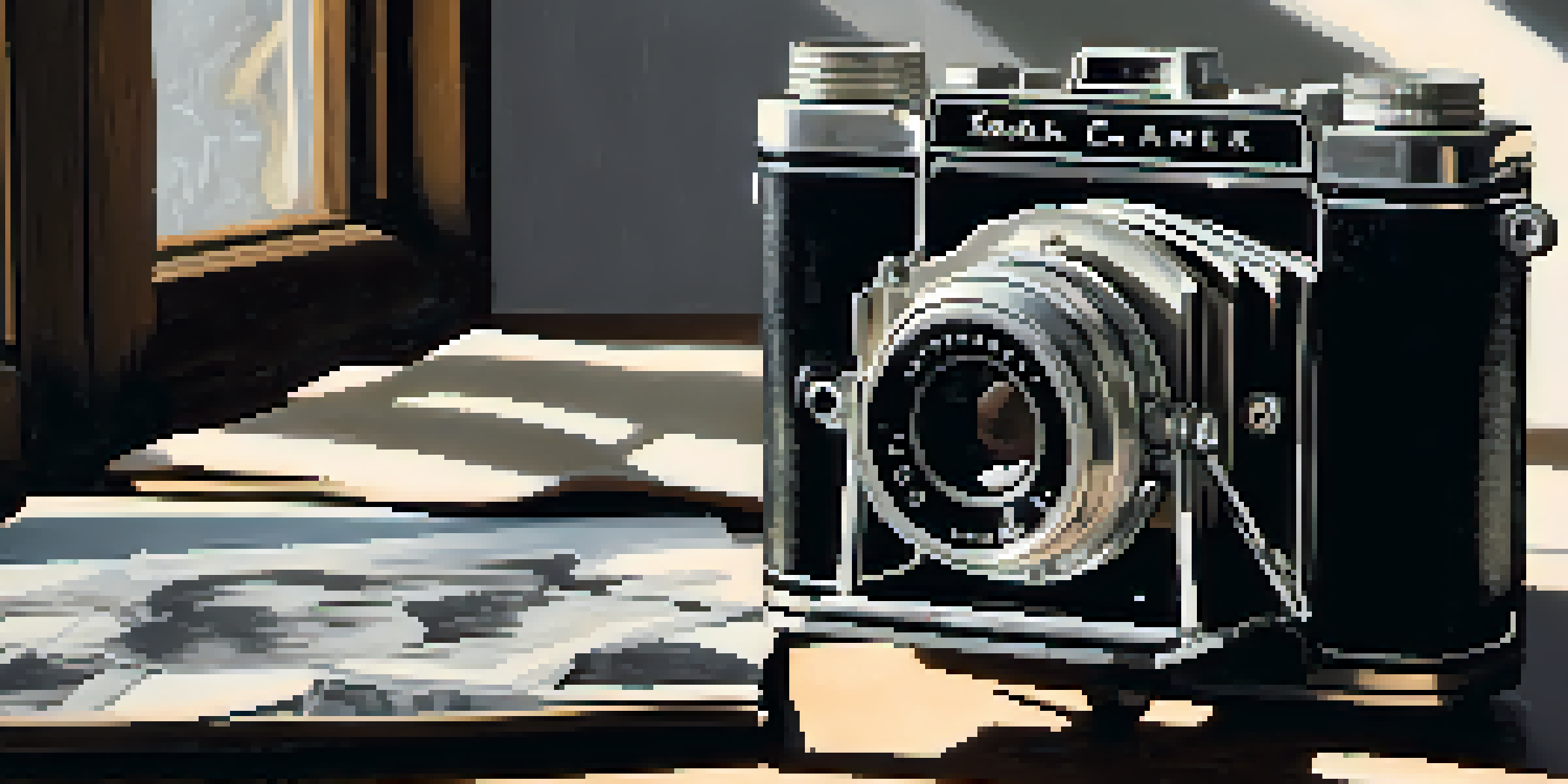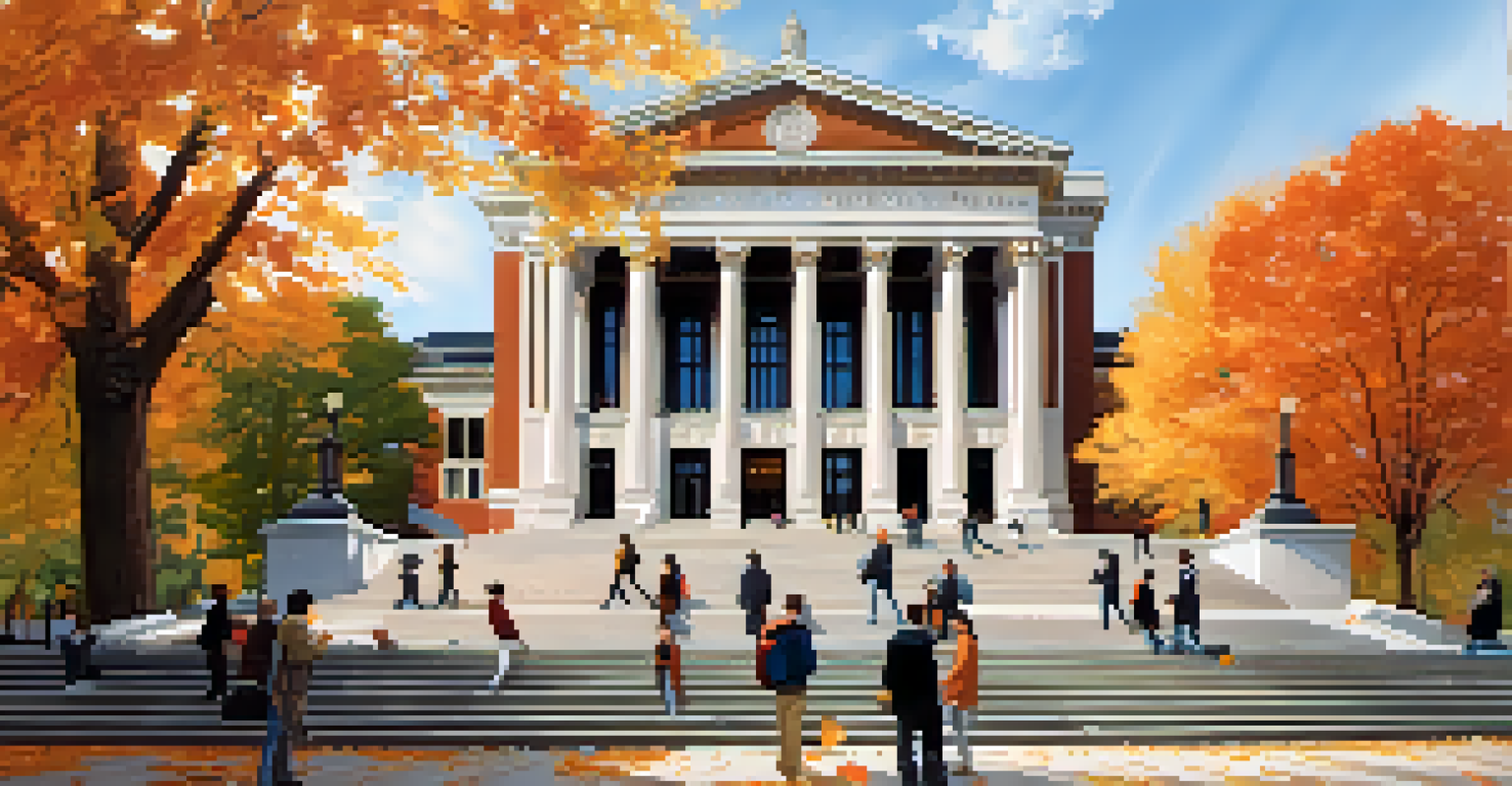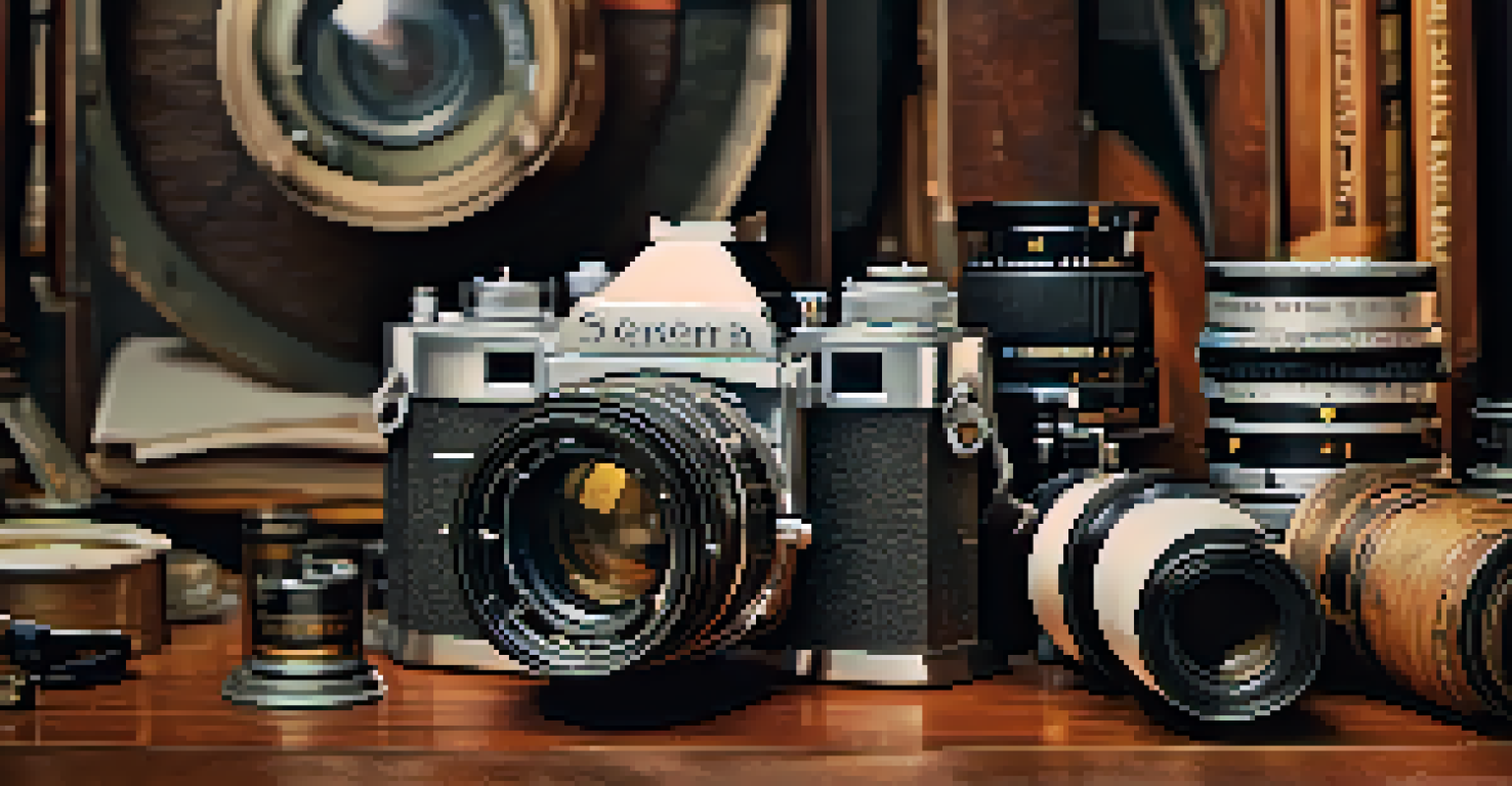Rochester's Historic Role in the Development of Film Cameras

The Birthplace of Kodak: A City and Its Camera
Rochester, New York, holds a special place in the history of photography, primarily as the birthplace of the Kodak camera. Founded in 1880 by George Eastman, the Eastman Kodak Company revolutionized the way people captured memories. Before Kodak, photography was a complex process that required professional equipment and expertise, but Eastman's vision made it accessible to the masses.
You press the button, we do the rest.
Kodak's slogan, 'You press the button, we do the rest,' simplifies the experience of photography, allowing anyone to take photos without the hassle of developing film. This shift not only popularized photography but also fostered a culture of capturing everyday moments. Rochester became synonymous with photography, drawing enthusiasts and professionals alike to its innovative spirit.
As Kodak flourished, it spurred economic growth in Rochester, creating jobs and attracting talent. This synergy between industry and community laid the groundwork for a rich legacy in photographic technology, making Rochester an essential player in the development of film cameras.
Innovations That Changed Photography Forever
Throughout its history, Kodak introduced numerous inventions that transformed photography. For instance, the introduction of roll film in 1888 made it easier to take multiple pictures without the need for glass plates. This innovation was pivotal in changing how photographers approached their craft, allowing for spontaneity and creativity.

Kodak's advancements continued with the launch of the first consumer-friendly camera, the Brownie, in 1900. The Brownie made photography fun and accessible for children and adults alike, fostering a new generation of photographers. This small box camera was affordable and simple to use, igniting a passion for photography across the globe.
Kodak's Innovation Revolutionized Photography
The Eastman Kodak Company made photography accessible to everyone, transforming it from a complex process into a simple and enjoyable activity.
Moreover, Kodak was not just a company; it was a catalyst for new ideas and technologies. Their commitment to research and development led to breakthroughs in film emulsions and processing, ensuring that Rochester remained at the forefront of the photography industry for decades.
The Role of Eastman School of Music and Art
The Eastman School of Music and Art, established by George Eastman in 1921, plays a crucial role in Rochester's artistic legacy, including photography. This prestigious institution has nurtured countless artists and creative minds, fostering an environment that encourages innovation in visual arts. The intersection of music, art, and photography has led to a vibrant cultural scene in the city.
Photography is a way of feeling, of touching, of loving. What you have caught on film is captured forever... It remembers little things, long after you have forgotten everything.
Students at Eastman are exposed to various artistic disciplines, including photography, which has evolved alongside traditional forms of art. The school offers courses that explore the technical aspects of photography, ensuring that students understand both the science and the artistry behind capturing images. This educational approach has produced many talented photographers who have made their mark in the industry.
Moreover, the Eastman School's influence extends beyond academia; it has helped establish Rochester as a hub for creative professionals. The collaboration between the school and local photographers fosters a community that thrives on artistic expression, further cementing Rochester's historic role in the development of film cameras.
Rochester's Impact on Film Technology
Beyond Kodak, Rochester was home to several other companies that contributed to the evolution of film technology. For example, the Ansco Company, established in the late 19th century, produced a range of photographic products, including cameras and film. Their innovations often complemented Kodak's offerings, creating a competitive and dynamic market.
Additionally, the city saw the rise of companies like the Rochester Optical Company, which specialized in manufacturing lenses and optical equipment. These local businesses played a significant role in enhancing the quality of photography by providing essential components for cameras. Their contributions helped push the boundaries of what photographers could achieve.
Rochester's Artistic Legacy
The Eastman School of Music and Art has fostered creativity and innovation in photography, contributing to Rochester's vibrant cultural scene.
The collaboration and competition among these companies fueled advancements in film technology, making Rochester a central hub for innovation. This rich history of technological development laid the foundation for the modern photography industry, showcasing the city's enduring influence.
Preserving Rochester's Photographic Heritage
As Rochester's significance in the history of photography continues to be recognized, efforts to preserve its photographic heritage have gained momentum. Various museums and institutions, such as the George Eastman Museum, celebrate the city's rich history by showcasing photography and film. This museum is not only a treasure trove of photographic art but also serves as an educational resource for future generations.
The museum's collection includes a vast array of historical cameras, photographs, and archives that tell the story of photography's evolution. By hosting exhibitions and educational programs, the George Eastman Museum plays a vital role in keeping the legacy of Rochester's photographic contributions alive. Visitors can explore the transformative journey of photography from its inception to the present day.
Through these preservation efforts, Rochester's impact on the world of photography is not lost to time. The city's commitment to honoring its history ensures that future generations will understand and appreciate the groundbreaking developments that took place within its borders.
Rochester: A Legacy of Innovation and Creativity
Rochester's legacy in the development of film cameras extends beyond its historical significance; it embodies a spirit of innovation and creativity. The city has nurtured a culture that embraces new ideas and technologies, allowing photography to flourish throughout the years. This continuous evolution has made Rochester a beacon for aspiring photographers and industry professionals alike.
The blend of technical expertise and artistic vision in Rochester has created a unique environment where photography can thrive. Local galleries and art spaces showcase emerging talent, providing a platform for photographers to share their work and connect with the community. This vibrant atmosphere fosters collaboration and inspiration among artists, further enhancing the city's creative landscape.
Future of Photography in Rochester
As technology evolves, Rochester's commitment to supporting photographers and embracing new trends ensures its continued influence in the photography industry.
As Rochester moves forward, it continues to honor its past while embracing the future of photography. The commitment to innovation remains strong, ensuring that the city's historical role in the development of film cameras will be celebrated for generations to come.
The Future of Photography in Rochester
Looking ahead, Rochester's influence on photography is poised to evolve with technological advancements. The rise of digital photography has transformed the industry, but the city's dedication to innovation remains steadfast. Local institutions and businesses are adapting to these changes, ensuring that Rochester continues to be relevant in the ever-changing landscape of photography.
Emerging technologies, such as smartphone photography and social media, have drastically altered how we capture and share images. Rochester's creative community is embracing these trends, with local photographers exploring new avenues for artistic expression. Workshops and collaborative projects are helping to bridge traditional photography techniques with contemporary practices.

As the city navigates this new era, Rochester's commitment to fostering creativity and supporting photographers will ensure that its rich legacy in the world of photography endures. The future may hold new challenges, but Rochester's spirit of innovation will continue to shine brightly in the realm of photography.